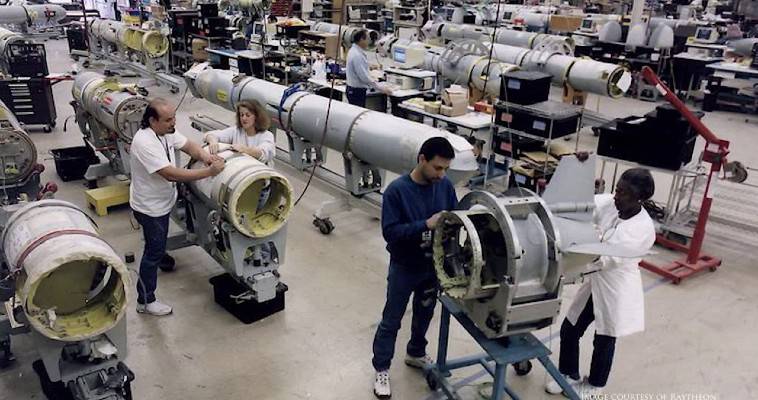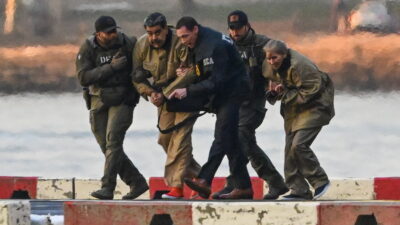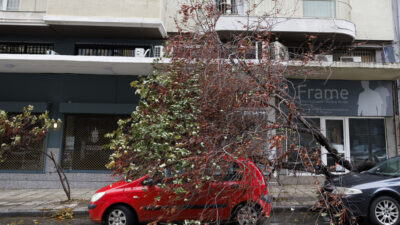Efthymios Tsiliopoulos: Turning Greek islands into unsinkable missile carriers — How war can be avoided
30/01/2021
When on June 13, 1944, Nazi Germany fired the first V1 flying bomb against British soil, it laid the groundwork for a change in the way the war was conducted. The V1 was a sluggish and rather inaccurate weapon, propelled by a ramjet. About a quarter of these flying bombs did not even reach the British coast, and many were shot down.
Since then a lot of water has flowed under the bridge. Seeing the low performance of the V1, the Germans designed the V2 rocket, the first ballistic missile in the world. Due to the rocket’s rise in space before it began its descent to the target at supersonic speeds, the V2 could not be shot down, nor was it preceded by sound so that those in the target area could seek cover.
Today, technology has made it possible to build much more advanced missiles (flying bombs) with much greater impact accuracy. This allows a long-range strike without the necessary use of an aerial carrier platform, such as an aircraft. This alone makes these weapons ideal as deterrent weapons especially if their mass use is envisaged.
From the above, we can easily conclude that weapons of this kind can be a very powerful deterrent in the quiver of Greek defense. The installation of such systems on Aegean islands can reduce the need for a longer range. For example, Lemnos is 230 km away from the Balikesir Air Base of the Turkish Air Force.
Greek islands: Unsinkable rocket carriers
Technology is now possible for the mass production of such weapons by countries, even by non-governmental entities. And the cost has now been greatly reduced. The biggest cost consists of the construction and installation of navigation systems to guide it to its the final target. But we will talk about the construction and cost of such missiles in a future article.
The production and installation of missiles/rockets, or cruise missiles on Aegean islands, offers the possibility – in case of a Turkish attack – of immediate overwhelming retaliation against strategic targets inside Turkey, without the possibility of equivalent retaliation. The reason is simple: the strategic targets in Turkish territory are located in its western part. On the contrary, the strategic targets in the Greek territory, which the Turks would like to hit, are located in mainland Greece.
Turkish war industries are located on the outskirts of Istanbul and Izmir (eg the Bayrak factories), while others are located in Sakarya (Otokar) on the outskirts of Ankara (Roketsan). The largest air bases in western Turkey are in Balikesir and Eskisehir. The main naval bases of Turkey are located in the Sea of Marmara and on the coasts of Asia Minor. Almost all strategically important Turkish military installations are located up to 600 km from the Aegean islands, most at much shorter distances.
What can be done
The missile systems that can be deployed can vary in range to deal with various threats. They can also be mobile or deployed at fixed bases. The use of fixed firing positions may seem strange at first glance and against the principle of movement, but it is highly effective under certain conditions.
Most of the world’s missile systems under construction are designed so that they can be moved to and from launch sites. Many systems have lightly armored sections, such as the crew cab, to provide protection against possible counter-artillery fire. On-board systems, if designed from the ground up, or modified for this purpose, can also be placed in containers towed by tractor-trailers, and even civilian vehicles.
Containers may bear civilian livery, inscriptions, and brand names, making them indistinguishable by enemy reconnaissance. This, of course, does not reduce the need for the rest of the vehicles of a battery to be able to be connected to the launchers for fire control, command, and communications. Launching from fixed positions is still a regular practice for intercontinental ballistic missiles (ICBMs). The missiles are housed in underground heavily armored silos with thick caps to withstand anything but a direct nuclear strike.
In the Greek case, it does not need to be so expensive and complicated. The Aegean islands have abundant non-inhabited areas, but also abandoned villages. Underground silos of small dimensions can be built in such areas, or even placed in abandoned and suitably modified buildings. If Greece could build the fortresses of the Metaxa Line between 1936-1940 with extreme secrecy, it can do this more easily. Without, of course, seeing workers take “selfies” in front of the projects and post them on social media sites!
What missile systems are needed
As we initially said a mix of different types of multi-range missiles would be the best solution. That is, missiles with a range of 40-50 km can provide defensive coverage of the islands, while longer-range missile artillery acting as the deterrent-strike force against Turkish strategic targets, although some Turkish strategic targets are within the range of smaller missiles. At the same time, of course, other missile systems will offer anti-aircraft coverage.
In order to hit targets in the depths of the Turkish hinterland, missile systems with a range of 600 km and above are required. Such systems can hit targets from the Aegean islands to Ankara. Necessarily these systems are much more voluminous and reach several meters in length. If, however, new technologies are used (ultrasonic scramjets, hyper lifting body designs), the dimensions are significantly reduced, at least in length.
The numbers needed depend on the targets that the Greek Armed Forces is potentially seeking to hit, as well as the probability of a circular error (CEP), ie the possible deviation of the point of impact of the missile from the target. The size of the deviation increases or decreases depending on the type of direction available to the missile system, which also depends on the cost.
Cost is not prohibitive
A grid of such arrays can launch a catastrophic barrage of at least a thousand missiles, causing a significant percentage of the targets to be completely destroyed or extensively damaged so that they will be rendered inoperable for a significant period of time. It may sound like such a large number of missile systems are expensive, but they may not be as much as we think they are.
The higher the production the lower the cost per unit. Also, new technological developments have reduced the cost of building missiles or cruise systems, with the most expensive part being the electronic system that will direct the missile to the target. But we will talk about them in the next article with data from producers of such systems.
The transformation of the Greek islands of the Aegean into unsinkable rocket launchers, as we used to talk about unsinkable aircraft carriers, would radically change the balance of power on the Greek-Turkish front. To be precise, it would make a conflict prohibitive, because the costs for both countries would be extremely high, many times greater than any desired profit.
This practically means that deterrence would work fully and effectively. Detterence not only against a generalized war, but also the provocation of a deliberate hot incident, since in conditions of balance of power this could turn into a military conflict. In other words, missile technology now allows the Greek islands, from being traditionally considered weak links in Greek defense turned into a strategic advantage.





